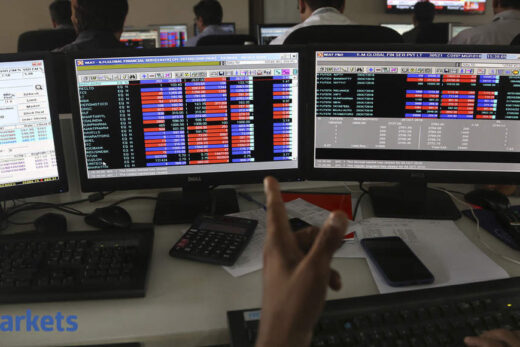How has the second COVID wave impacted your supply chain, demand, restocking and other factors?
Before I get into the second wave, overall we are very pleased with the numbers that we have delivered for the year, 20% top-line, 24% PBT and 100% group net. For the quarter, very strong top line and a very strong group net. Yes, there is a bit of pressure and I can talk through it at some point, very easily explainable that is why we remain very bullish on the future.
Coming specifically to the second wave, I think we are seeing the impact across three pieces. Number one, if I take markets, in the first wave we had seen impacts mostly in large metros and a little bit in tier I, tier II. Now we are seeing it go down to the countryside and rural that is a bit worrying. The impact is broader. Number two, if I look from a portfolio perspective, I do not see any difference between the first and the second. In fact, we are much more resilient. As a company, we have learnt from the first wave and therefore from a portfolio perspective, supply chains, etc, we are much more robust. The one thing is the impact on people. I think for our safety first, people first so we have already gone to work from home but we are seeing a larger impact across the supply chain whether it is logistics, transportation, etc, that is something we are keeping an eye on literally minute by minute to make sure that we are rising to the occasion.
From a trade perspective, we see the same thing that we saw the first time around – moderate trade footfall is falling dropping dramatically, e-commerce rising rapidly and general trade. This time the difference is because there is no national lockdown and there is timing differences or timing restrictions. Kiranas are still rising to the occasion and I think Kirana business will jump but supply to them in those designated timeframes is turning out to be an issue. Overall we feel quite confident given the new distribution system that we have laid out, given the fact that we have learnt from the first wave, given the fact that we have strengthened our supply chains and, of course, taking care of people. On the people front, apart from everything that the Tata Group is doing, we have also gone out and sent a clear message across the frontline. We have sort of provided insurance, COVID Kavach to the entire frontline, on top of that we are paying for vaccinations for whoever is eligible be it our employees, partners and across the chain.
How much of the margin dip is beyond your control and how much of the margin dip is something that you have consciously decided to maintain?
First, if you look at the overall full year, it is a pretty picture – 20, 24 and 103 on the group net. Then if you look at the full-year perspective, you will see that costs are under great control. If I take out the raw material and advertising, we are better by about 300 bps year on year which means both there is cost control as well as the synergies that we talked about, a lot of it coming into play. In fact, I think we are significantly ahead on our cost synergies. Then I dial back and see if there is an issue with execution. But it is an integrated system and the foods business delivered 22% top-line and 50% bottom line. So if the same system of backend and frontend is delivering which means then there is another issue. Therefore, I go down to what are the other issues. Internationally, overall we had expected very consciously because we had seen the pantry loading a year back so we were cycling that. We knew we would have to get to a bit of a slowdown and that is exactly what has happened. Shares have not moved dramatically. In fact, we are on a stronger footing in most stronger markets so that we feel good about it. Then the big impact is from Indian beverages. Now India beverages again at execution with our numeric reach up by 20%, direct outlets up by 30%, market share quarter on quarter up by 190 bps.
We have been the fastest-growing branded player in the market either for the last 12 months or for the quarter. And we have not bought a market share. We have executed better because it is not that we have discounted and gone for market share. The catch is tea prices, cost of tea which had jumped up dramatically in August, September thereabouts is coming down but it is still 50% above where it was for quarter four. Now we have taken pricing judiciously in line with being competitive in the market, I mean that is a fine line you walk a balance between volume, margin and share. So we have consciously maintained our competitive stance, executed better, gained market share but that has put pressure on margins. While the tea prices are coming down, you have to remember we carry inventory over about 60-90 days for tea because the tea plucking season ends in December and we have got to carry it for at least till the new season starts which is May, June right now. So we do see a bit of moderation on prices and therefore margins being built back. It would have been very simple for us to take pricing to make margins in the last quarter and lose a bit of share. But to my mind, given where we are seeing tea prices going, given our execution that would have been a very short term measure. So we have chosen to keep our eyes on the medium to long term, maintain/grow market share, being competitively priced and then work on the margin fronts as the new tea cost.
All in all, even if you look at it, whether it is cash flow where we have converted more than 100% of EBITDA into cash, inventory number of days from 59 days last year now down to 42 so overall across the base execution parameter is very strong. I would say it is primarily India tea prices and it is a conscious decision to hold share and maintain momentum and wait for the tea pricing to moderate. Now just as a perspective, if tea prices do not moderate, we will be again taking judicious price increase. By FY22 margin should be back to where it should have been.
Is 25% the new normal growth given the current scenario?
First of all, let me comment on the base effect, in Q4 last year, we had grown 7% and most FMCGs have declined, so we are not cycling a negative number. We have grown 26% in Q4 on top of last year. Overall, even if you look at two years CAGR, we are up at 15 whereas the others are just about touching double-digit so from that perspective it is not only the base effect number. As we increase distribution, strengthen our brands, drive innovation, we are targeting high double-digit growth, profitable growth keeping cost tight and dropping that to the bottom line. So I would say double-digit is the norm. Sometimes you get significantly higher double digits, sometimes you would get low double digits, but that is what we are targeting.
What will happen in the situation if tea prices come down?
That is a very sweet spot to be in, accepting when tea prices come down. I would daresay that there will be tampering of prices also. Again it is a balance but I would say the margin should come back to the 30-35% number very quickly.
What is happening in the food portfolio given that the portfolio has seen a growth of 20%?
For the food portfolio, I would split it into two pieces. Number one is salt and all the other portfolio with Sampann out there. Now salt itself has seen very strong growth. I think it was 17% last quarter. Now we have seen growth opportunities both at the lower end of the pyramid as well as the higher premium side. Both the lower end and the premium side have fired which means our margins in salt again are in the 35% range because it is both a combination of volume and mix which has delivered the margins. Our premium salts have grown by about 70% which is a very good place to be in from a margin profile. We have gained a share in overall salt, we are about 160 bps quarter on quarter, so even for the full year, it is about 160-180 bps. So we are gaining share on top of being the largest share salt player by far. I think the execution and the portfolio and A&P is working out just fine. Then I come to the Sampann portfolio for the full year. We have grown at 26%. I think we are still on the ground floor on Sampann, Sampann is pulses, spices and mixes. Spices are an opportunity for profitable growth, pulses are a huge opportunity both for volume and for margin and then the whole expansion. We have started our new launches. Over the quarter, we have launched a bunch of stuff including mixes like ragi, idli, dosa etc. We have launched haldi doodh, so our innovation pipeline is now beginning to fire in Sampann and we should expect that growth to continue. All in all, on the foods portfolio I would say double-digit growth overall with Sampann significantly outpacing the rest of the portfolio, margins being 34-35 overall that is what we see.
How much new margin business addition would be there be incrementally every year?
We see opportunities both in the existing portfolio as we move beyond just commodities and premiumise the portfolio, whether it is tea, whether we are ramping up coffee which is again a high margin business or salt like I said premium salts growing by 60, 70, 80%. We see an opportunity for margin improvement there but as we move into new portfolios, obviously we are trying to move up the value chain, we are trying to get into higher gross margin categories. For example, Soulful is in the 40% to 50% margin profile so you would see, if I just put a number, I would say right now you would probably see a two-thirds, one-third ratio, two-third still being from the base business, one-third from new businesses but as we keep adding new businesses, that percentage of the mix continue to grow on the total margin profile.
Is the one-third business (which is the new business) higher margin business and the two-third business turn for your company?
One-third extra margin from new businesses, two-thirds of the extra margin coming from legacy businesses that is ballpark number but that one-third will continue to grow as we look at both organic and inorganic opportunities. Organically we are expanding the portfolio detail, some of the launches that we have done in Sampann, we are ramping up coffee. We have launched multiple other products in PE, we have launched a D to C system with Coffee and 1868 by Tata Tea and in the inorganic spaces, we are juggling with about three to four opportunities. As I mentioned, both are strategic and financial filters. We do not see an issue. We are sitting debt-free, with about 3500 crores of cash, so there is no reason for us not to go aggressive, providing we see both the strategic and financial opportunity.
Given that Rs 3000 crore is a lot of cash. Would you conserve it or go for a buyback?
We are a company trying for growth. We are looking for growth, as I said we are looking at multiple opportunities, we have just raised dividend percentage, about 50% higher than where it was last year so there is a bit of cash going out to shareholders but we do see opportunities on the table and if there are opportunities we would be quick to seize them.
What is the thinking in keeping Tata Coffee listed?
We are looking at all different structural and strategic options available to make sure that we are creating a value-accretive business in Tata Consumer. I would just leave it at that.
Are you considering it or are you saying it is a big no?
I am saying all options are on the table. It depends on whether it creates value, how does it create value if so yes, if not then what are the other options. So everything is on the table.
What is your view on international business?
If I split my business, we have got three big pieces; there is food, Indian beverages and international and then of course joint ventures, associates and all that but broadly it was a one-third, one-third ratio when we started off but now India is accelerating significantly. So India’s role in the portfolio is growing market share and expanded portfolio, international is a profitable, steady, cash-generating business, double-digit EBITDA margins now for the last one year. I think they have delivered phenomenal results. If I take out the divestitures that they have done, the out of form business in the US, the Czech business which we divested in January of 2020, if I take out MAP Coffee which we have divested in Australia, it is about 8% top-line and about 28% EBIT, which I think is a very significant driver.
The big thing in which we have maintained/grown share in most of our segments like the UK, Canada very – the growth is happening in fruit, herbal and specialities and we have started focussing on that. Growth in fruit, herbals and specialities is 2x of what it is in black for us internally and black is largely a stagnant category so obviously profitability is moving in the right direction. Over the last year, we have divested non-strategic businesses like Empirical in the US and MAP in Australia. As of today, Poland changed the business model, Australia because of the divestitures is now profitable. We do not have a loss-making business in our portfolio. Earlier we had those pieces so today every international business is profitable. The key is now firing them up with the right strategic levers and fuelling for growth. Will the growth be as much as India, no, but again remember it is profitable growth, good cash flow.
What will be the big change in FY22 versus FY25?
We have entered FY22 with a brand new vehicle. A vehicle on which we have changed all the four tyres changed the engine and while we were at it we have given it a new coat of paint. A brand new spanking vehicle entering FY22 and we feel good about it. Now, as we go forward, you are absolutely right we need to expand our portfolio and that is one of the big strategic plays that you will see from Tata Consumer. As we do this, we have distilled the entire – we want to become a large FMCG company, a large F&B company with very strong footing and then into the large FMCG space.
In the F&B space, we have distilled the entire opportunity available, we looked at about 30 different categories which had a scale of about 5000 crores plus and we have narrowed it down to four distinct platforms – not categories – four distinct platforms that we will play in and now we are focused on that. Some of it we will do organically, some of that we will do inorganically.
For example, Soulfull was a very clear play that we saw because we saw a huge opportunity in snacks, healthy snacks, mini-meals, breakfast, where we did not have a brand and we did not have a product play and therefore we brought in Soulfull because we like their positioning, their brand, their pipeline for the future and now we will be focussed on expanding that through our entire network. You will start seeing similar plays going across. As I said at any point in time, we are juggling around three to four different opportunities. Again, it is not only the strategic fit, I mean strategic fit is fairly easy to look for but as a company, we are extremely mindful of where we put our money, so we also look for very strong financial payback. As long as things pass the muster, we would not be shy of going inorganic.



